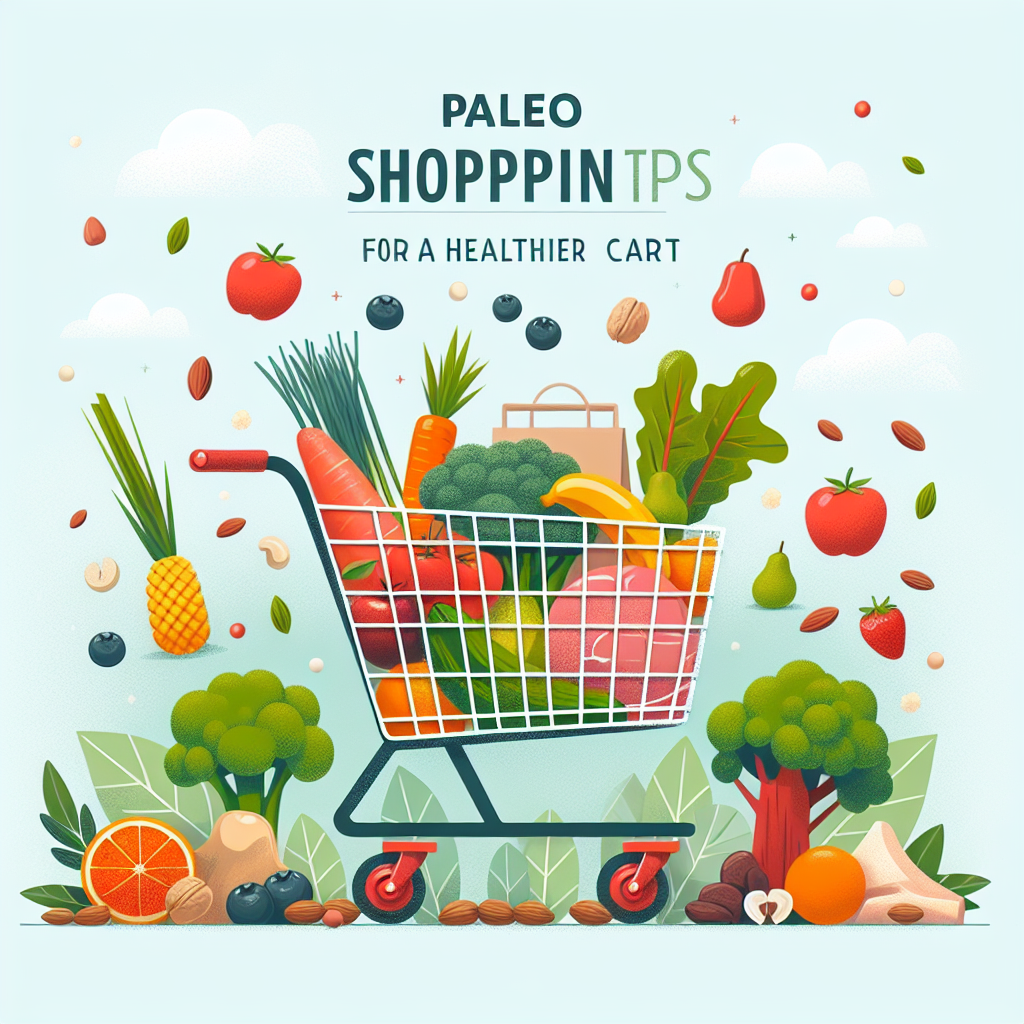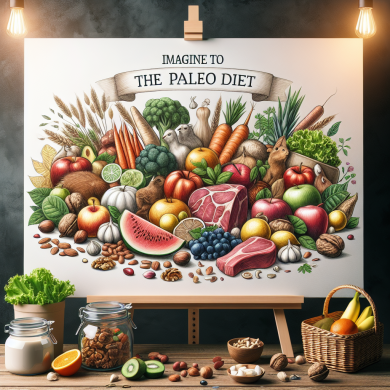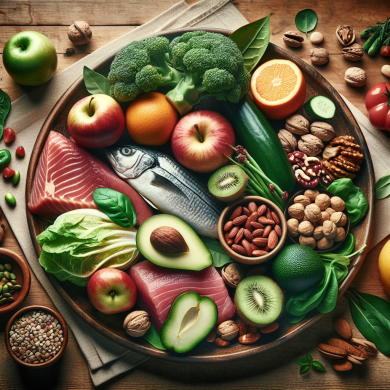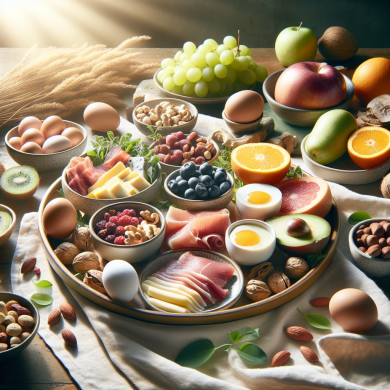Paleo Shopping Tips for a Healthier Cart
The Paleo diet, often referred to as the “caveman diet,” seeks to emulate the dietary patterns of our ancient ancestors. It focuses on whole, natural foods and eliminates processed items, grains, and dairy. Adopting a Paleo lifestyle can seem daunting, especially when it comes to grocery shopping. However, with the right strategies, you can fill your cart with nutritious and delicious foods that align with Paleo principles. Here are some tips to help you shop smarter and healthier on a Paleo diet.
1. Understand the Basics of the Paleo Diet
Before heading to the store, it’s crucial to have a solid understanding of what the Paleo diet entails. The diet emphasizes whole foods such as lean meats, fish, fruits, vegetables, nuts, and seeds. It eliminates processed foods, sugars, grains, legumes, and dairy. Familiarize yourself with this list and keep it in mind as you navigate the aisles.
2. Plan Your Meals
Meal planning is a cornerstone of successful Paleo shopping. By planning your meals, you can create a shopping list that includes all the necessary ingredients, helping you avoid impulse buys and ensuring you have everything you need for the week. Consider recipes that can be made in bulk for meal prep, such as stews, roasts, and salads.
3. Make a Shopping List
A shopping list is your best friend on a Paleo diet. It keeps you focused and prevents deviations from your dietary goals. Organize your list by categories such as proteins, produce, and pantry items. This not only makes your shopping trip more efficient but also helps you avoid the aisles with tempting non-Paleo foods.
4. Shop the Perimeter of the Store
Most grocery stores are designed with fresh foods around the perimeter. This is where you’ll find produce, meats, and other whole foods that fit the Paleo lifestyle. Focus your shopping efforts here, and avoid the inner aisles where processed and packaged foods dominate.
5. Choose Organic and Grass-Fed Options
Whenever possible, opt for organic produce and grass-fed meats. Organic produce is grown without synthetic pesticides and fertilizers, aligning with the Paleo emphasis on natural foods. Grass-fed meats are richer in omega-3 fatty acids and are more nutrient-dense compared to their grain-fed counterparts. While these options might be more expensive, they offer health benefits that align with Paleo principles.
6. Prioritize Seasonal and Local Produce
Seasonal and local produce tends to be fresher, more flavorful, and often cheaper than out-of-season varieties. Eating seasonally also allows for a varied diet, which can prevent the monotony of eating the same fruits and vegetables repeatedly. Visit local farmers’ markets for the freshest options.
7. Focus on Whole Foods
Whole foods are the cornerstone of the Paleo diet. Focus on purchasing single-ingredient items, such as fresh fruits and vegetables, meats, fish, eggs, nuts, and seeds. Avoid packaged foods with long ingredient lists, as they often contain preservatives, sugars, and other non-Paleo additives.
8. Read Labels Carefully
Even seemingly healthy products can contain non-Paleo ingredients. Always read labels carefully to check for hidden sugars, additives, and other non-compliant ingredients. Watch out for items like sauces, dressings, and even some dried fruits that may have added sugars or preservatives.
9. Stock Up on Pantry Essentials
Having a well-stocked pantry can make it easier to prepare Paleo meals. Essentials include coconut oil, olive oil, ghee, almond flour, coconut flour, and a variety of nuts and seeds. These ingredients can be used in a wide range of recipes, from baking to cooking.
10. Don’t Forget About Seafood
Seafood is an excellent source of protein and essential fatty acids such as omega-3s. Include a variety of fish and shellfish in your diet, and try to choose wild-caught options when possible for their higher nutrient content and fewer contaminants.
11. Explore Alternative Flours
Traditional flours are off-limits on the Paleo diet, but there are plenty of alternatives. Almond flour, coconut flour, and cassava flour are great options for baking and cooking. Each has unique properties, so you may need to experiment to find the best use for each type.
12. Invest in Quality Storage Containers
Preparing and storing food is a key part of maintaining a Paleo lifestyle. Invest in quality glass or BPA-free plastic containers that keep your food fresh and allow for easy meal prep. Proper storage can extend the shelf life of your groceries and reduce food waste.
13. Avoid Processed Meat Products
While meat is a staple of the Paleo diet, processed meats like bacon, sausage, and deli meats can contain additives, preservatives, and sugars. Look for natural, nitrate-free, and sugar-free options, or consider preparing your own to ensure they’re Paleo-compliant.
14. Experiment with Paleo-Friendly Snacks
Snacking can be challenging on a Paleo diet, but there are plenty of options. Consider nuts, seeds, jerky, or fresh fruit. You can also make your own snacks, like Paleo energy bars or trail mixes, for a quick and satisfying bite.
15. Be Mindful of Your Budget
Eating Paleo can be more expensive, but there are ways to manage costs. Buy in bulk, choose frozen fruits and vegetables, and incorporate less expensive cuts of meat. Planning meals around sales and using coupons can also help keep your grocery bill in check.
16. Stay Informed and Adapt
The world of nutrition is always evolving, and the Paleo diet is no exception. Stay informed about new research and adapt your diet as needed. Join Paleo communities online or read books and articles to keep your knowledge up to date.
Conclusion
Shopping for a Paleo diet can be a rewarding experience that leads to a healthier lifestyle. By understanding the basics, planning your meals, and making informed choices, you can fill your cart with nutritious foods that support your health goals. Remember, the key to success is preparation and mindfulness. Happy shopping, and enjoy your journey to a healthier you!















Add comment